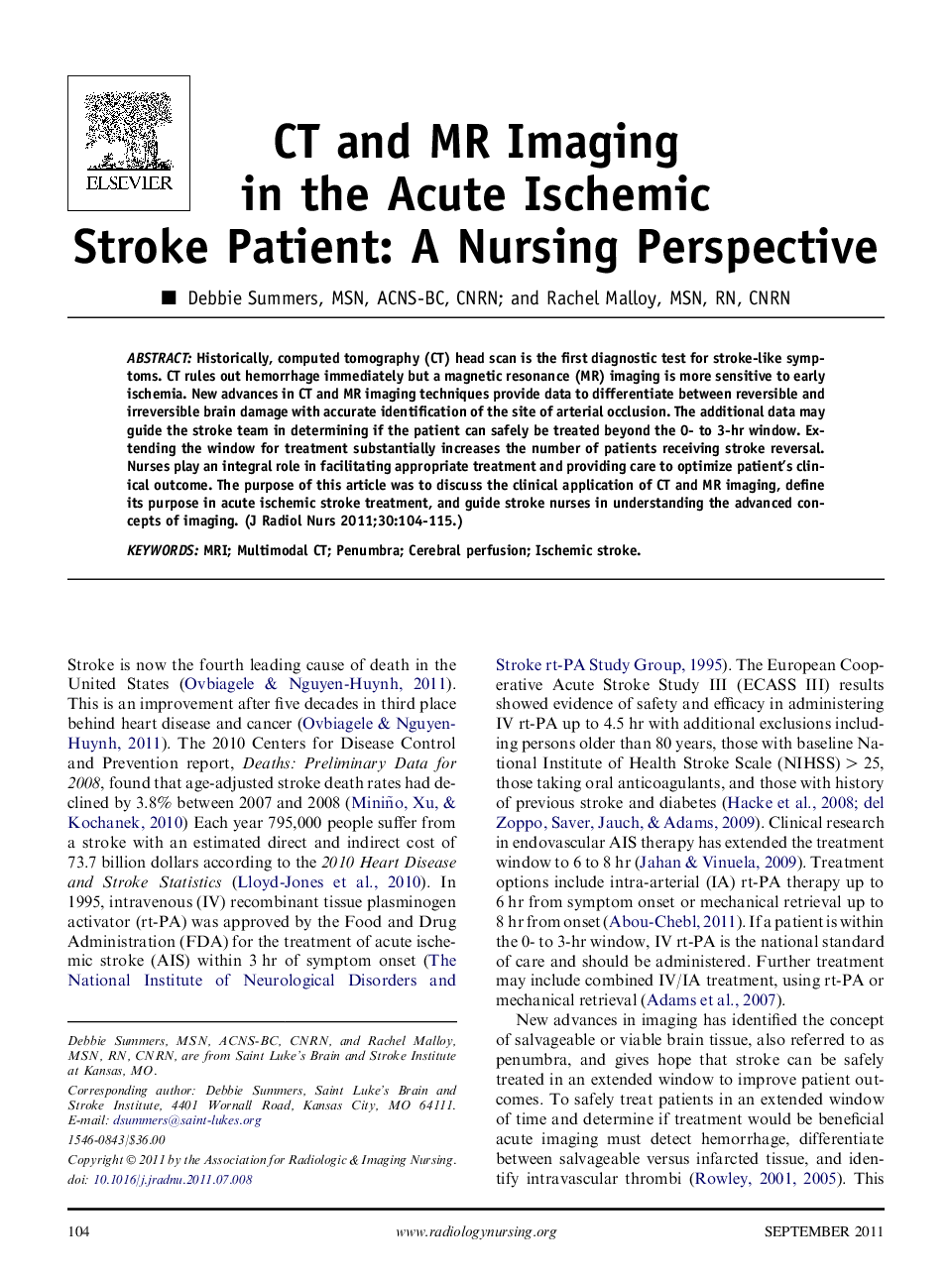| Article ID | Journal | Published Year | Pages | File Type |
|---|---|---|---|---|
| 2673356 | Journal of Radiology Nursing | 2011 | 12 Pages |
Historically, computed tomography (CT) head scan is the first diagnostic test for stroke-like symptoms. CT rules out hemorrhage immediately but a magnetic resonance (MR) imaging is more sensitive to early ischemia. New advances in CT and MR imaging techniques provide data to differentiate between reversible and irreversible brain damage with accurate identification of the site of arterial occlusion. The additional data may guide the stroke team in determining if the patient can safely be treated beyond the 0- to 3-hr window. Extending the window for treatment substantially increases the number of patients receiving stroke reversal. Nurses play an integral role in facilitating appropriate treatment and providing care to optimize patient’s clinical outcome. The purpose of this article was to discuss the clinical application of CT and MR imaging, define its purpose in acute ischemic stroke treatment, and guide stroke nurses in understanding the advanced concepts of imaging.
